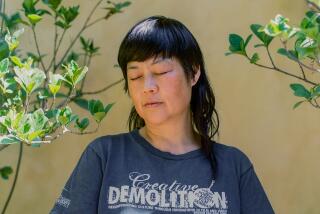Jeanne Chall; Longtime Phonics Advocate
- Share via
Jeanne S. Chall, an influential psychologist whose research on reading opposed the educational tide and led to her unwavering belief in the importance of phonics, has died.
An emeritus professor at Harvard University, Chall was 78 and died of heart failure Saturday at her home in Cambridge, Mass., a spokeswoman for the Harvard Graduate School of Education said.
The author of several well-regarded texts on reading, Chall was best known for her staunch support of phonics instruction, an unpopular position during the past two decades when the nation’s schools were dominated by the so-called whole language approach: teaching reading primarily through contextual clues rather than alphabetic decoding.
In the 1960s, when she undertook a massive review of reading research, Chall thought the scholarly scales would tip in whole language’s favor.
But Chall, to her surprise, proved herself wrong. Her 1967 book, “Learning to Read: The Great Debate,” was a definitive analysis of reading research that argued for the critical importance of teaching children phonics as a first step on the path to becoming good readers.
“Most people would bow to their expectations and filter and arrange the information so it made sense in their own world view. Jeanne turned hers upside-down and said: ‘What do you know? We are making a mistake,’ ” said Marilyn Adams, an eminent reading researcher whose 1990 book, “Beginning to Read,” confirmed Chall’s 1967 findings.
After virulent debate over the proper way to engage young children in the task of reading, public schools in California and elsewhere around the nation have begun to reintroduce phonics instruction, along with vocabulary and spelling drills, to reverse a pattern of weak performance on national tests of reading competency.
Adams said Chall was “loudly and brutally maligned” by whole language advocates after taking her stand for phonics. But the Harvard professor, a petite woman described by colleagues as a tiny dynamo, stuck to her view that phonics was essential, particularly for disadvantaged students who were most likely to start school without grounding in the ABCs.
In fact, Chall’s research helped demonstrate that knowledge of the alphabet and awareness of the sounds that make up words are among the most powerful predictors of reading success.
By the mid-1990s, as dismal reading scores rang alarm bells in California and other states, Chall’s work was reissued in paperback, sought by a new generation of educators eager for guidance in what had become a hotly political debate.
“Learning to Read” was unequivocal in stating the case for phonics: “At every level tested--kindergarten through college--letter and phonics knowledge is positively associated with reading achievement and also spelling,” she wrote. “At the college level, particularly among poor readers, knowing sound values of letters has an important relationship to reading ability.”
Although she insisted that intensive phonics instruction produced better readers, Chall also was careful to emphasize that it was only a tool. She agreed with whole language enthusiasts that it was just as essential for young children to be exposed to challenging and imaginative literature.
“Probably the majority of the things she published were about those issues--what makes text more difficult, more appealing, more challenging for children,” said Adams, a protege of Chall who is a visiting scholar at Harvard.
Chall collected and reviewed classic American readers. Several years ago, after comparing current readers to many in her collection that were popular a century ago, she concluded that the old texts were more challenging and tackled more substantial topics than contemporary readers. That led her to develop her own series of readers for children in second through fourth grades that featured such classics as Hans Christian Andersen’s “The Nightingale” and an 1892 story about wasps called “The First Paper Makers.”
“Research has shown that when the books were harder the children achieved better, and when they got easier the achievement went down,” Chall said in 1994. “You don’t have to be a great scientist to see that makes sense.”
Chall was born in Poland on Jan. 1, 1921 and immigrated to New York when she was 7. She spoke mainly Yiddish when she arrived in the United States, but quickly absorbed English in New York City public schools. She became her mother’s tutor, teaching her English well enough to pass the test for U.S. citizenship.
She became the first member of her family to attend college, graduating cum laude from City College of New York in 1941. By 1952 she had earned a master’s and a doctorate from Ohio State University.
She taught at Ohio State, New York’s City College and Columbia University’s Teachers College before joining Harvard’s Graduate School of Education as a full professor in 1965.
She founded the Harvard Reading Laboratory and was an early advisor to the creators of the PBS series “Sesame Street.” She also developed an important diagnostic tool for reading specialists with her Ohio State University mentor, Edgar Dale. Called the Dale-Chall Readability Formula, it was one of the first and most effective tools for measuring the difficulty of a text.
Although she became an emeritus professor in 1991, Chall continued to conduct and publish research. Among the works published after she formally retired were “Learning to Read in the Computer Age,” “Creating Successful Readers,” “Readability Revisited and the New Dale-Chall Readability Formula” and “Teaching Children to Read.” She recently completed a book on academic trends over the past half-century, which will be published in February.
More to Read
Sign up for our Book Club newsletter
Get the latest news, events and more from the Los Angeles Times Book Club, and help us get L.A. reading and talking.
You may occasionally receive promotional content from the Los Angeles Times.









